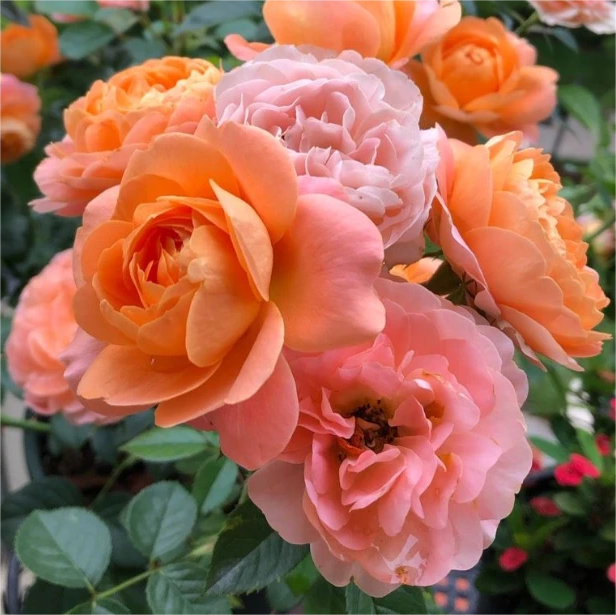Author Introduction:
Write by ANHUI FUYANG JINFENG ECOAGRICULTURE CO.,LTD., where gardening expertise meets premium quality plants and trees! With over 30 years of experience, we’ve cultivated a reputation as specialists in providing top-notch flora for all your gardening needs. What began with a few humble plastic greenhouses has blossomed into a sprawling operation spanning about 300 acres.
Climbing plants add a touch of elegance and vertical interest to any garden or outdoor space. Whether you're aiming to cover a bare wall, create a living screen, or enhance your pergola, training climbing plants to grow on a trellis or other support structure is key to their success. Here’s a comprehensive guide to help you master the art of training these beautiful plants.
Choosing the Right Climbing Plants
Before you start training, consider the type of climbing plant that suits your garden’s conditions:
Twining vines like clematis and morning glories naturally wrap around supports.
Scramblers such as roses and honeysuckle benefit from tying to a trellis.
Tendril climbers like sweet peas and grapevines need thin supports to grab onto.
Steps to Train Climbing Plants
-
Selecting and Installing the Support
Choose a sturdy trellis or structure: Ensure it can support the weight of mature plants.
Positioning: Place the support where the plant can receive adequate sunlight and airflow.
-
Planting and Initial Support
Plant at the base of the support: Ensure the plant is placed close enough to begin training.
Initial ties: Secure the main stem to the support with soft plant ties or twine.
-
Encouraging Growth
Regular pruning: Trim excess growth to encourage lateral shoots.
Tying new growth: Secure new growth to the support as it develops.
Redirecting stems: Guide stems around the support structure as they grow.
-
Maintenance and Care
Watering: Keep the plant adequately hydrated, especially during hot weather.
Fertilizing: Provide balanced fertilizer during the growing season.
Monitoring for pests and diseases: Check regularly and treat promptly if issues arise.
Examples of Climbing Flower Plants
Here are some popular climbing flowers that thrive when trained on supports:
- Training Wisteria on a Trellis or Support Structure: Wisteria is a vigorous climber that can quickly cover large areas, making it ideal for pergolas, arbors, and fences.
- Training Clematis on a Trellis or Support Structure: Known for its stunning flowers in various colors, clematis vines twine naturally around supports.
- Training Roses on a Trellis or Support Structure: Climbing rose varieties like 'New Dawn' or 'Climbing Iceberg' can be trained up trellises, fences, or pergolas.
- Training Morning Glory on a Trellis or Support Structure: These fast-growing vines produce colorful trumpet-shaped flowers and are perfect for covering trellises.
- Training Honeysuckle on a Trellis or Support Structure: Fragrant honeysuckle vines attract pollinators and can be trained on arbors or fences.
- Training Sweet Pea on a Trellis or Support Structure: Delicate and fragrant, sweet peas thrive with support and produce clusters of flowers.
Tips for Success
Patience is key: Training climbing plants takes time, so be patient and persistent.
Regular maintenance: Check and adjust ties and supports as the plant grows.
Pruning: Prune to encourage bushier growth and more blooms.
Conclusion
Training climbing plants to grow on trellises and other supports is a rewarding endeavor that adds beauty and functionality to your garden. By choosing the right plants, providing adequate support, and consistently guiding their growth, you’ll create a stunning vertical garden feature that enhances your outdoor space. Whether you opt for the vibrant blooms of clematis or the fragrance of honeysuckle, these plants will transform your garden into a lush, green sanctuary.
For more gardening tips and plant inspiration, stay tuned to our blog. Have questions or need further assistance? Feel free to reach out – we’re here to help you cultivate your perfect garden oasis!



